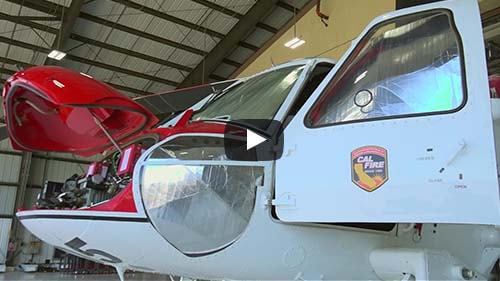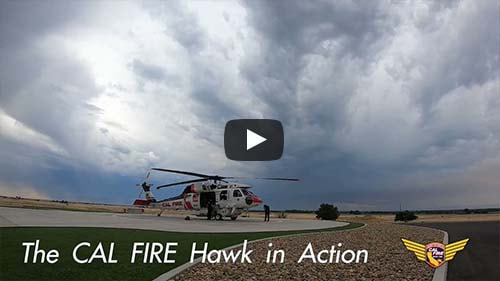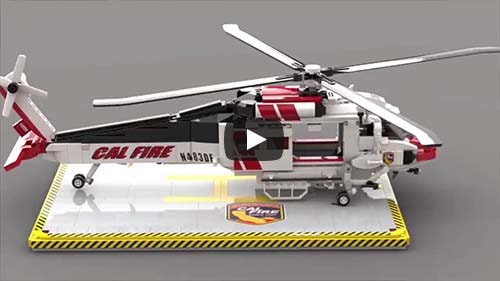- Home
- Magazines
-
Newsletters
- 19 July 2024
- 12 July 2024
- 5 July 2024
- 28 June 2024
- 14 June 2024
- 7 June 2024
- 31 May 2024
- 24 May 2024
- 17 May 2024
- 10 May 2024
- 3 May 2024
- 26 April 2024
- 19 April 2024
- 12 April 2024
- 22 March 2024
- 15 March 2024
- 8 March 2024
- 1 March 2024
- 23 February 2024
- 16 February 2024
- 9 February 2024
- 26 January 2024
- 19 January 2024
- 12 January 2024
- 22 December 2023
- 1 December 2023
- 24 November 2023
- 10 November 2023
- 3 November 2023
- 27 October 2023
- 20 October 2023
- 13 October 2023
- 6 October 2023
- 29 September 2023
- 22 September 2023
- 15 September 2023
- 8 September 2023
- 25 August 2023
- 18 August 2023
- 11 August 2023
- 4 August 2023
- 28 July 2023
- 21 July 2023
- 14 July 2023
- 7 July 2023
- 30 June 2023
- 23 June 2023
- 15 June 2023
- 2 June 2023
- 26 May 2023
- 19 May 2023
- 12 May 2023
- 5 May 2023
- 28 April 2023
- 21 April 2023
- 14 April 2023
- 6 April 2023
- 31 March 2023
- 24 March 2023
- 17 March 2023
- 10 March 2023
- 3 March 2023
- 24 February 2023
- 17 February 2023
- 10 February 2023
- 3 February 2023
- 27 January 2023
- 13 January 2023
- 22 December 2022
- 15 December 2022
- 9 December 2022
- 2 December 2022
- 25 November 2022
- 18 November 2022
- 11 November 2022
- 4 November 2022
- Advertising
- Subscribe
- Articles
-
Galleries
- AOSH Firexpo 2024
- Midvaal Fit to Fight Fire 2024
- WoF KNP 2023 Gallery
- TFA 2023 Gallery
- DMISA Conference 2023
- ETS 2023 Gallery
- Drager Fire Combat and Rescue Challenge 2023
- AOSH Firexpo 2023
- Midvaal Fit to Fight Fire
- WC IFFD 2023
- NMU 13th Fire Management Symposium 2022
- JOIFF Africa Conference 2022
- ETS 2022 Gallery
- TFA 2022 Gallery
- IFFD 2018
- SAESI
- TFA
- WRC 2018
- WRC 2019
- A-OSH/Securex
- IFE AGM 2019
- ETS Ind Fire Comp Nov 2019
- ETS Challenge 2021
- Drager launch
- Drager Fire Combat and Rescue Challenge 2022
- TFA
- Contact
- Home
- Magazines
-
Newsletters
- 19 July 2024
- 12 July 2024
- 5 July 2024
- 28 June 2024
- 14 June 2024
- 7 June 2024
- 31 May 2024
- 24 May 2024
- 17 May 2024
- 10 May 2024
- 3 May 2024
- 26 April 2024
- 19 April 2024
- 12 April 2024
- 22 March 2024
- 15 March 2024
- 8 March 2024
- 1 March 2024
- 23 February 2024
- 16 February 2024
- 9 February 2024
- 26 January 2024
- 19 January 2024
- 12 January 2024
- 22 December 2023
- 1 December 2023
- 24 November 2023
- 10 November 2023
- 3 November 2023
- 27 October 2023
- 20 October 2023
- 13 October 2023
- 6 October 2023
- 29 September 2023
- 22 September 2023
- 15 September 2023
- 8 September 2023
- 25 August 2023
- 18 August 2023
- 11 August 2023
- 4 August 2023
- 28 July 2023
- 21 July 2023
- 14 July 2023
- 7 July 2023
- 30 June 2023
- 23 June 2023
- 15 June 2023
- 2 June 2023
- 26 May 2023
- 19 May 2023
- 12 May 2023
- 5 May 2023
- 28 April 2023
- 21 April 2023
- 14 April 2023
- 6 April 2023
- 31 March 2023
- 24 March 2023
- 17 March 2023
- 10 March 2023
- 3 March 2023
- 24 February 2023
- 17 February 2023
- 10 February 2023
- 3 February 2023
- 27 January 2023
- 13 January 2023
- 22 December 2022
- 15 December 2022
- 9 December 2022
- 2 December 2022
- 25 November 2022
- 18 November 2022
- 11 November 2022
- 4 November 2022
- Advertising
- Subscribe
- Articles
-
Galleries
- AOSH Firexpo 2024
- Midvaal Fit to Fight Fire 2024
- WoF KNP 2023 Gallery
- TFA 2023 Gallery
- DMISA Conference 2023
- ETS 2023 Gallery
- Drager Fire Combat and Rescue Challenge 2023
- AOSH Firexpo 2023
- Midvaal Fit to Fight Fire
- WC IFFD 2023
- NMU 13th Fire Management Symposium 2022
- JOIFF Africa Conference 2022
- ETS 2022 Gallery
- TFA 2022 Gallery
- IFFD 2018
- SAESI
- TFA
- WRC 2018
- WRC 2019
- A-OSH/Securex
- IFE AGM 2019
- ETS Ind Fire Comp Nov 2019
- ETS Challenge 2021
- Drager launch
- Drager Fire Combat and Rescue Challenge 2022
- TFA
- Contact
Follow us
‘It’s the Jeep Wrangler of the sky’; New Cal Fire helicopters are game-changers for fire fighting at night, US
Until this wildfire season, all the air attacks Cal Fire has launched with its own aircraft and helicopters have been limited to daylight hours only. A new fleet of Sikorsky S-70i Firehawk helicopters is changing that for California’s state-wide fire fighting department, allowing Cal Fire to douse flames in the dark. At Cal Fire’s Aviation Management Unit at McClellan Park in Sacramento County, ABC10 met up with Cal Fire’s helicopter programme manager and Chief Helicopter Pilot Ben Berman, who gave us a tour of the new Cal Fire Hawks. “It’s the Jeep Wrangler of the sky,” Berman said with a smile.
Cal Fire has nine of the Hawks now, with three more being built and money for four additional ones approved in this year’s state budget, at $25 million each. “This utilises lasering gyros for our attitude indicators,” Berman said, standing beside one of the Cal Fire Hawks. “It’s definitely state-of-the-art.” The fleet will eventually be distributed to Cal Fire bases throughout the state. As they’re brought online, Cal Fire’s legacy fleet of Bell UH-1H “Huey” helicopters will be retired. These Hueys, some of them have been around since Vietnam. Some of them have, you know, bullet-hole patches,” Berman said. “They're truly a workhorse.” These Hueys have served Cal Fire well over the decades, Berman said but these new Cal Fire Hawks, designed specifically for fire fighting, are a game-changer. “Because the Hawk is so much faster than the Huey…we can get a little bit further a little bit faster,” Berman said. Both the Huey and the Hawk are capable of refilling their water tank using a drop-down snorkel while hovering above a body of water. The Hawks, however, have larger tanks that take less than 30 seconds to refill, Berman said. “It's a 1 000 gallon tank where the Huey was north of about 300 gallons on a good day,” he said. That’s just one of the many ways this machine helps Cal Fire better attack California’s wildfires. Hueys are single-engine whereas Hawks are dual-engine. “So if we were in an extreme circumstance, we can drop the water and be able to fly out single-engine and be able to save the aircraft and crew,” Berman explained. “(The Huey is) a single engine helicopter and a lot of our mountainous terrain does not give us that its own forgiving if we lose an engine.” The Hawk can transport at least a dozen fire fighters to the frontline of a fire fight. “We’ll get them on the fire line and then we support them with fire suppression, with water drops,” Berman said. Since getting its first FireHawk into operation in June 2020, Berman said, Cal Fire has been using them for water drops in daylight hours. But this year, for the first time in Cal Fire history, the state fire department has been able to mount an air attack at night using its own crews and equipment. Berman points out that other agencies, including local fire fighting agencies in Southern California, have been conducting night-time helicopter water drops for years now, and last year Cal Fire contracted with a company to do the first ever night-time air attack in Northern California. Still, he said, for Cal Fire to have this night-time fire fighting tool at its disposal and eventually distributed throughout the state, will be a huge benefit. There are currently eight Cal Fire pilots trained to fly the Cal Fire Hawks at night, four at McClellan and four at Cal Fire ’s Hemet Ryan base, Berman said. “We have five bases that are identified as night bases. By next fire season, we'll have three of those five,” Berman said. The first Cal Fire Hawk night-time water drop was back in July, on the Electra Fire in Amador County. The department did more night-time fire suppression later that month, on the Oak Fire in Mariposa County, where Berman flew. “It was a great experience,” he said. “It was good to see that our training prescription is working.” In a building down the road at McClellan Park is where Cal Fire trains all of its aviation crews from around the state. It’s here Berman trains pilots on a FireHawk simulator before they take control of the actual machine. “We have to get everybody trained with all these circuit breakers, all these switches, how to fly this thing in a tactical environment first,” he said. “And then we work our way towards the Night Vision.” It takes about 300 training hours before a Huey pilot can do night flying operations in a FireHawk, Berman said, from classroom to simulator to in-the-air practice. The Night Vision Goggles or NVG, are what really make the night-time fire suppression so effective but they take practice to use well. “Take two toilet paper tubes and put them over your eyes and turn off the lights and that's your field of view,” Berman said. “It requires us to have to do things that we're not used to doing when we're flying during the day-- and that's big head movements, being able to pick up hazards, a lot more communication going on in the helicopter.” He said crew members will use laser pointers at night to circle hot spots they see on the ground, leading the pilot to the drop site. “The goggles are amplifying that infrared energy from the fire, so the fires look like really bright hot spots,” Berman said. “So you’re actually able to pick up a lot of hot spots that the naked eye can’t see…That's the advantages of using night vision goggles.” Night-time aerial drops come with a risk. “Flying during the day, the risk might be a little bit lower because you have all your senses, right? And at night, that risk is elevated,” Berman said. But at night, there aren’t any other aircraft to worry about. “So now we can really concentrate on our hazards on the ground and hazards when we're going into a dip area to do a hover fill,” Berman said. The goggles can see through some smoke and haze, he said but thick smoke presents a danger. “You don't want to get yourself in a situation where you’re low level in a canyon and then all-of-a-sudden, lights are out,” he said. Cal Fire is thoughtful about when to conduct night flying operations, Berman said. “For threat to life. Threat to structures. Threat to critical infrastructure. And to slow to slow fire growth…if we can't get ground crews in,” he said. The Cal Fire Hawk has become another critical tool to battle California’s wildfires. And you could own a Cal Fire Hawk, too! Well, a very small one that you have to build yourself. The Cal Fire Hawk is on its way to becoming a Lego set! ABC10 has been following the story of a designer who made a Cal Fire Hawk out of Legos and submitted it to Lego as a product idea. The set reached the required 10 000 supporters, so Lego has moved it to the “review stage,” which begins this month. Lego says they’ll give the idea either a “go” or “no go” in the coming months. Source: ABC10 |
Quick navigation
Social
|
Who are we?FRI Media (Pty) Ltd is an independent publisher of technical magazines including the well-read and respected Fire and Rescue International, its weekly FRI Newsletter and the Disaster Management Journal. We also offer a complete marketing and publishing package, which include design, printing and corporate wear and gifts. |
Weekly FRI Newsletter |
© Copyright 2018 Fire and Rescue International. All Rights Reserved.











